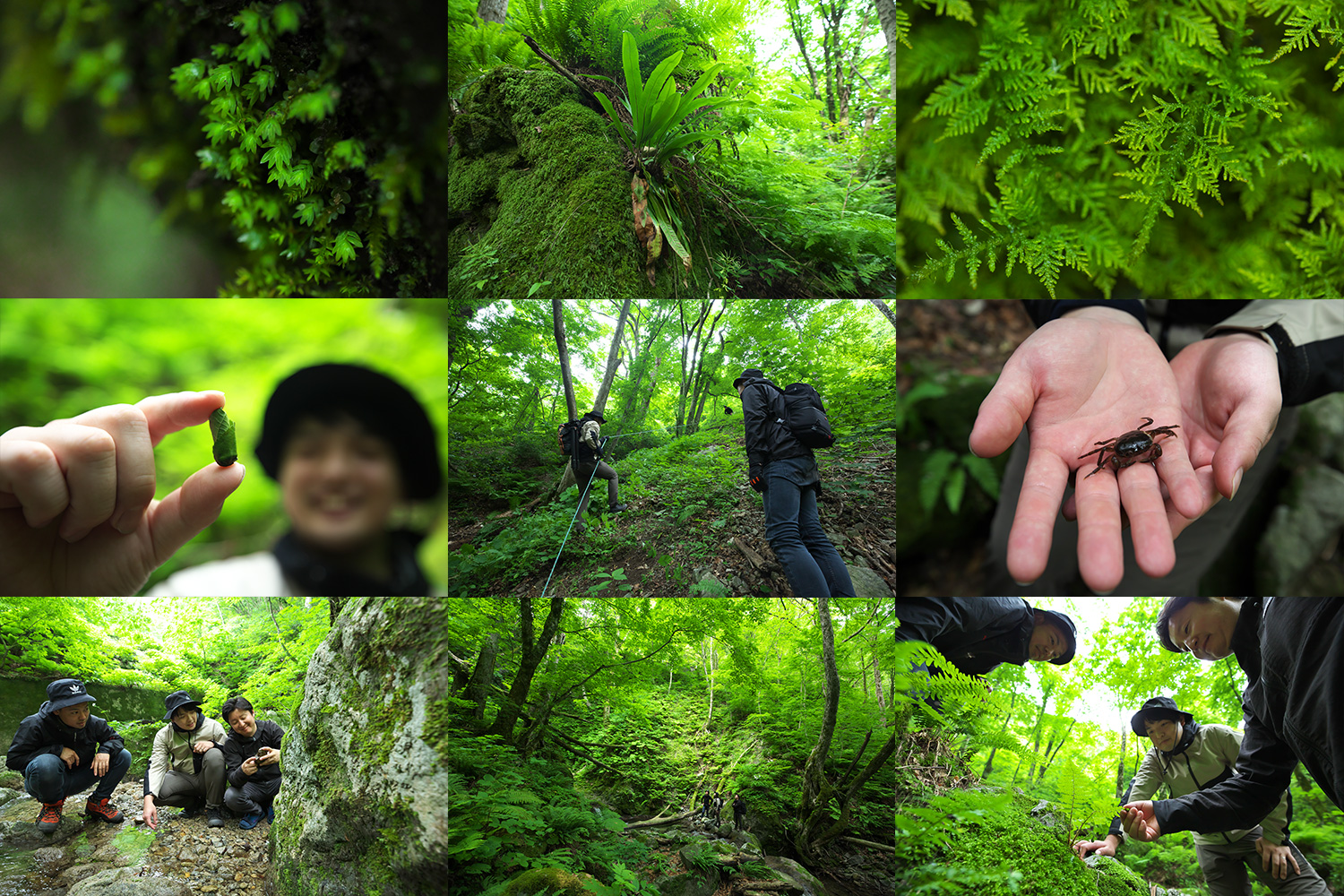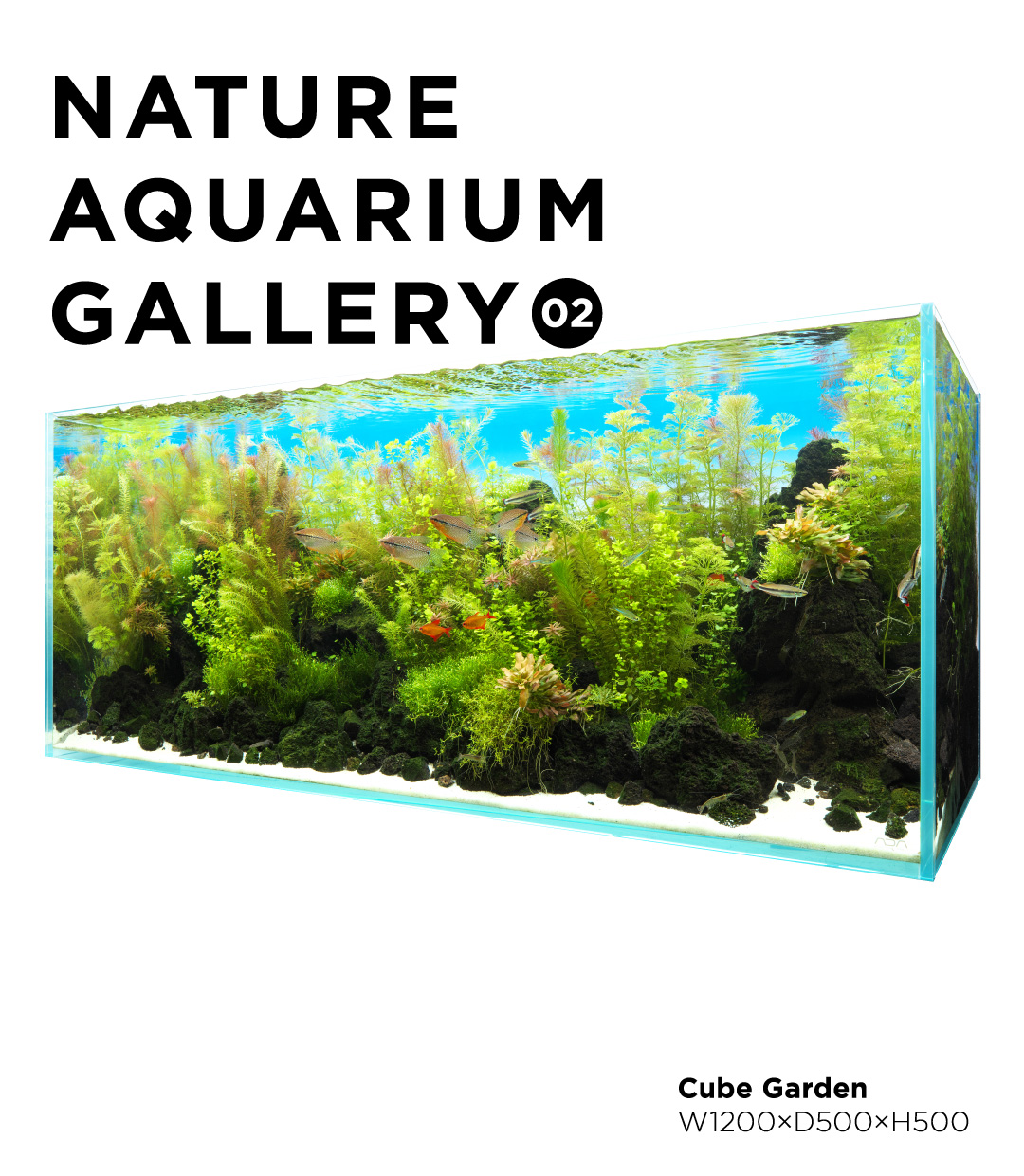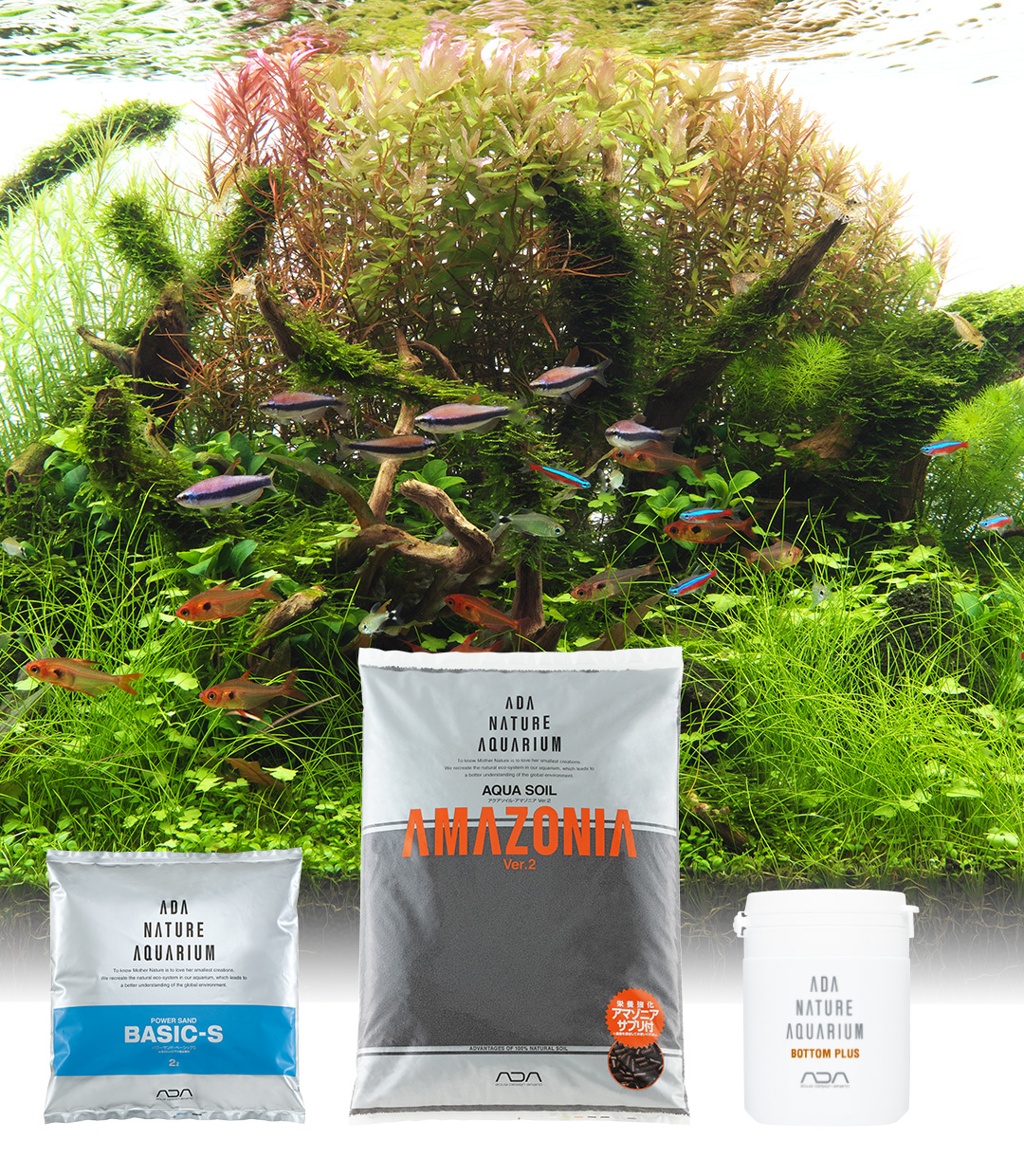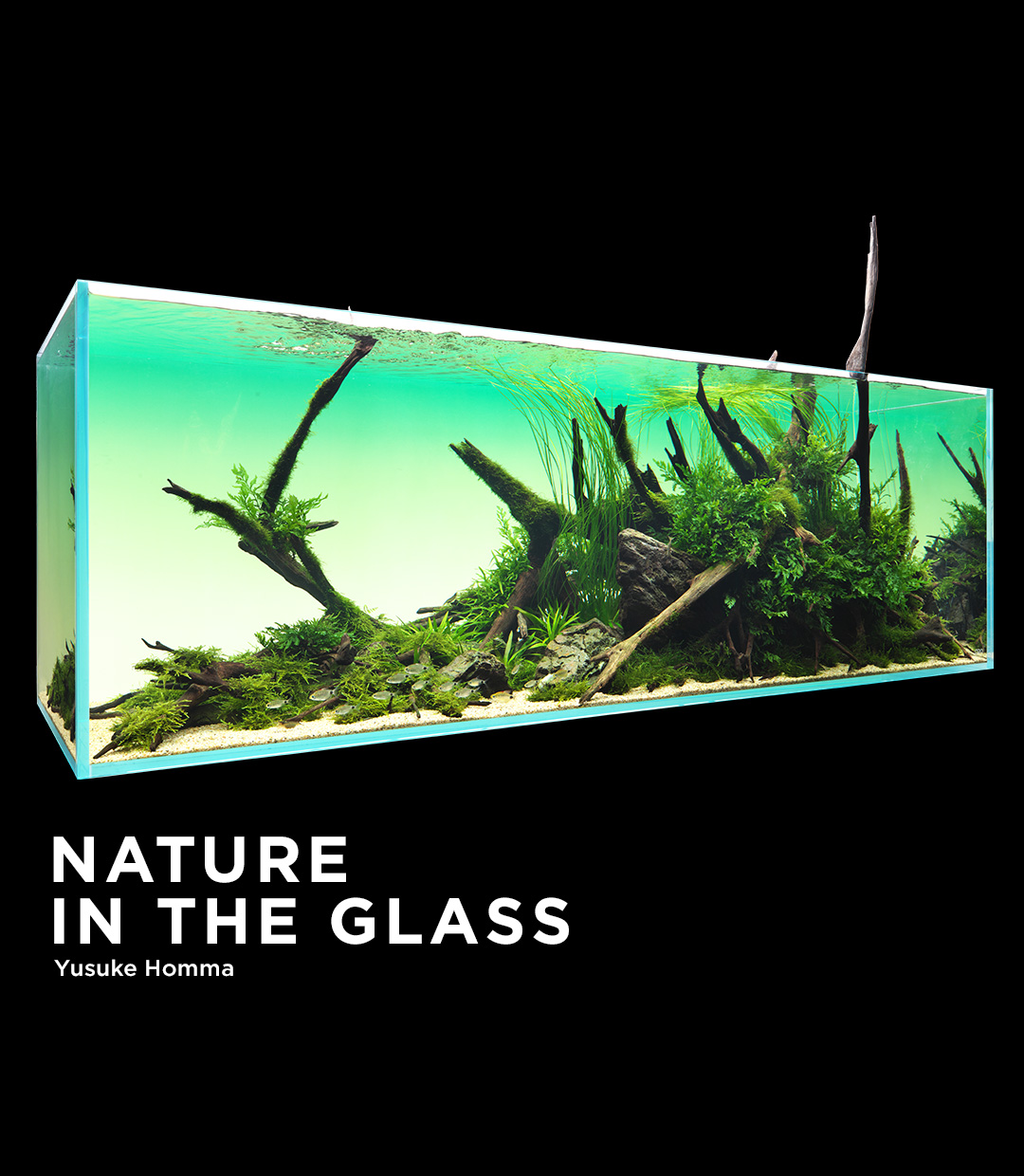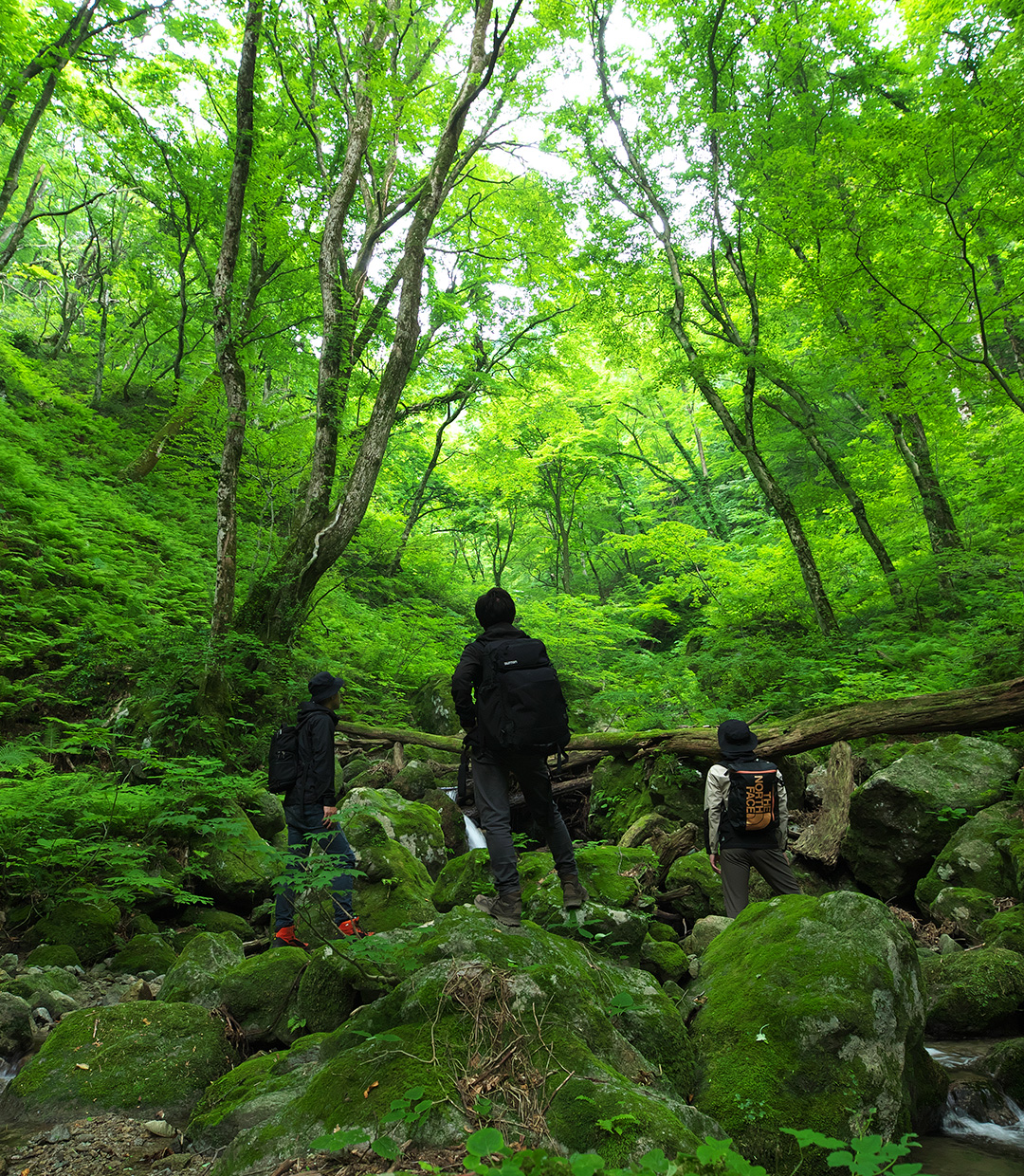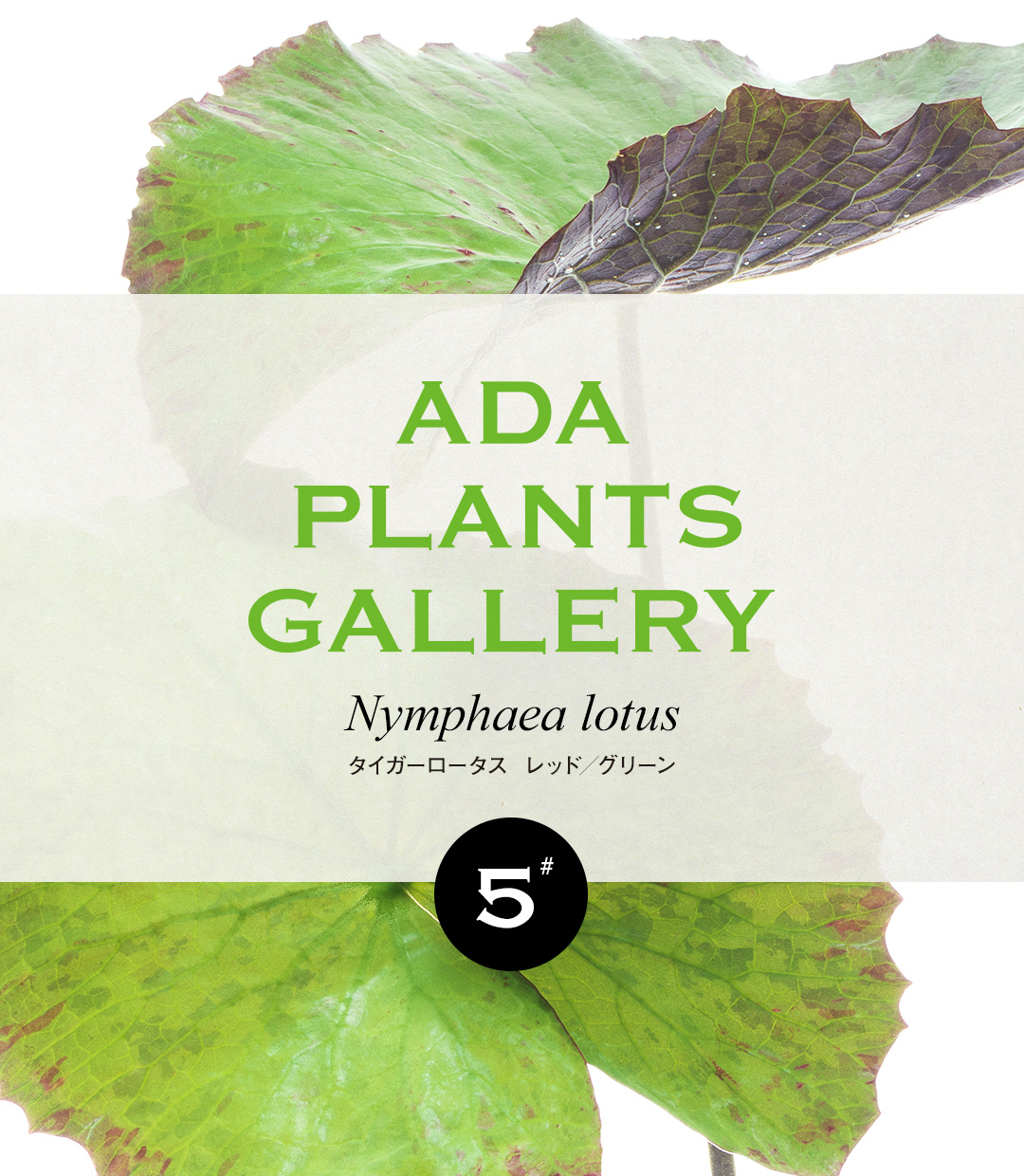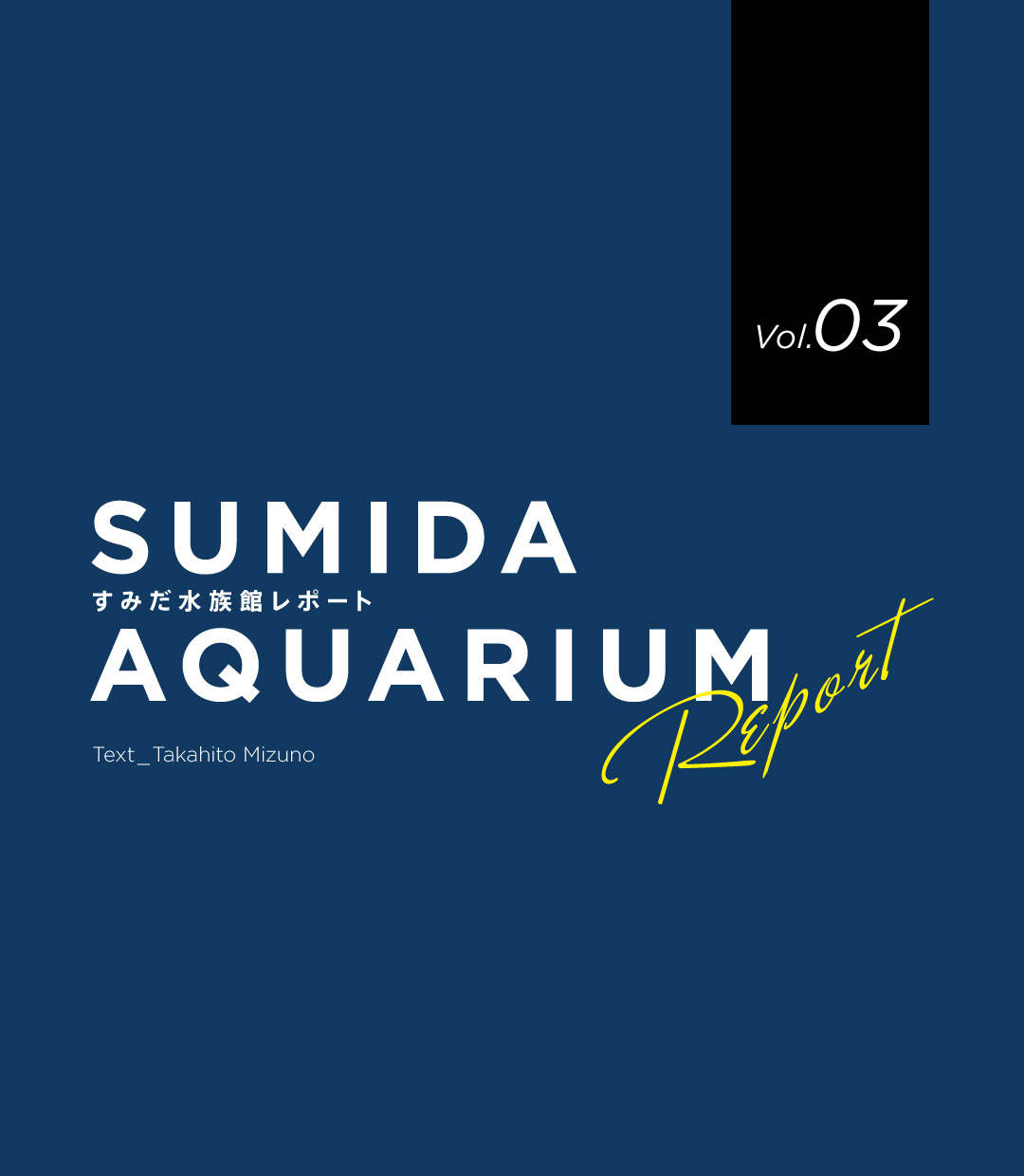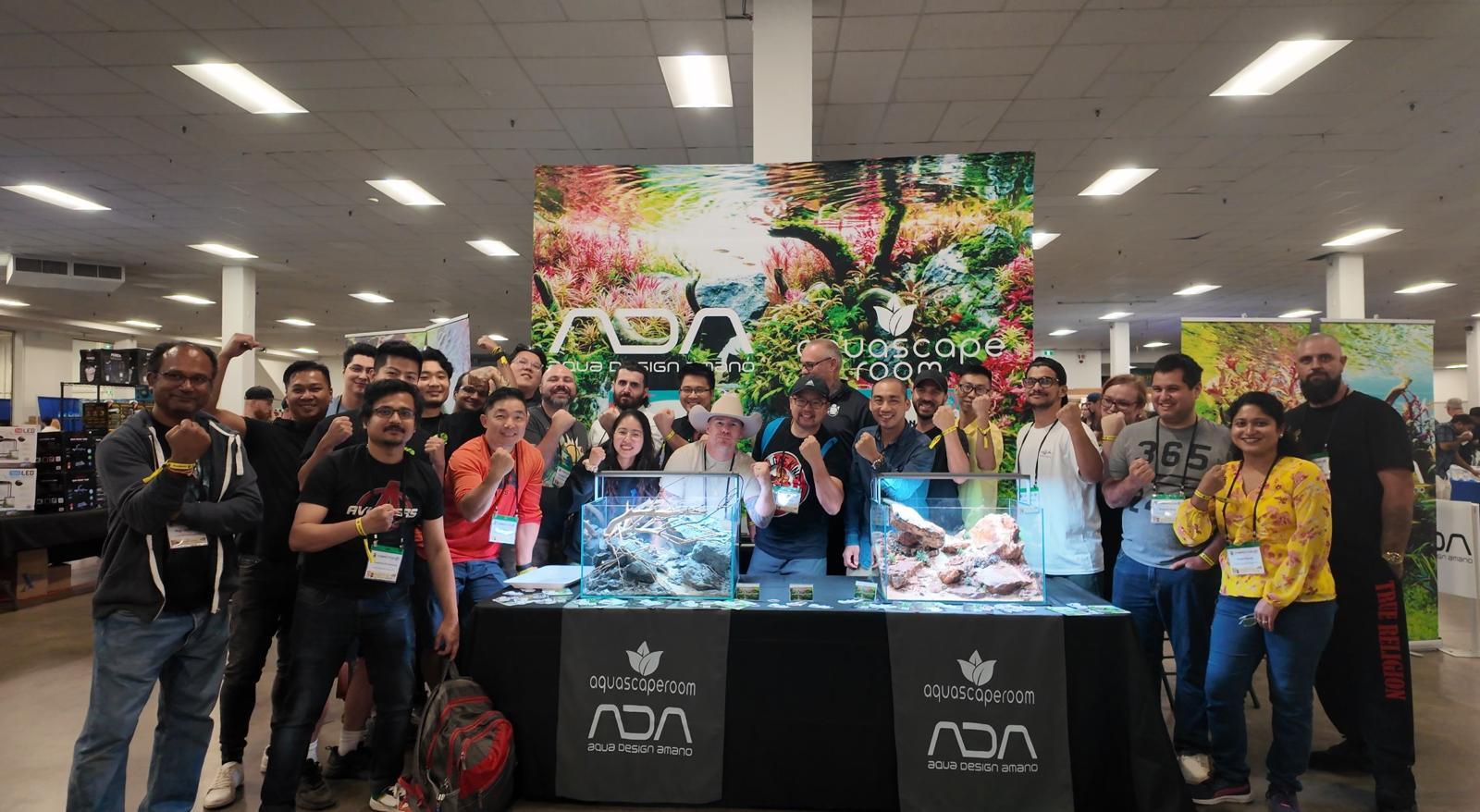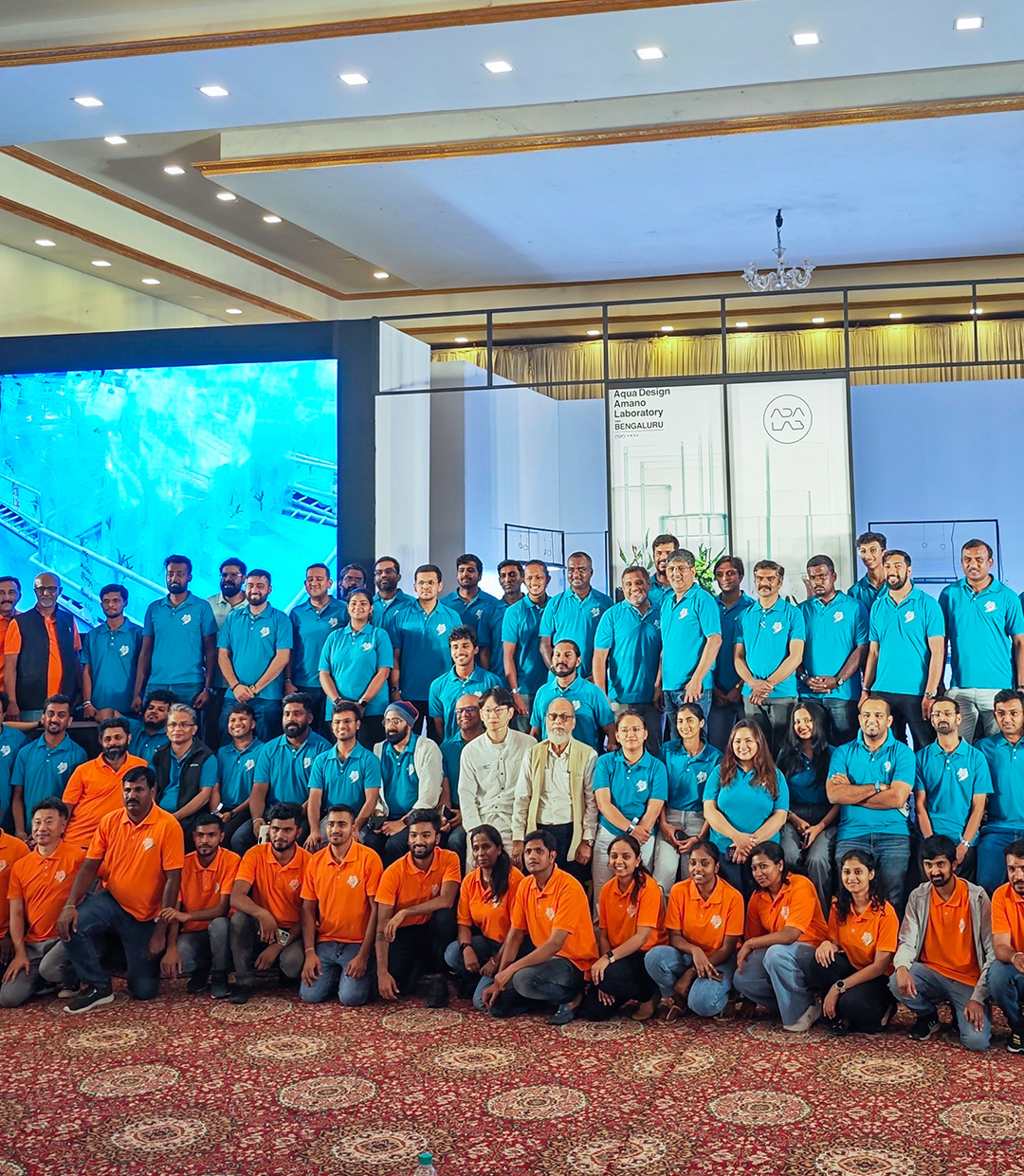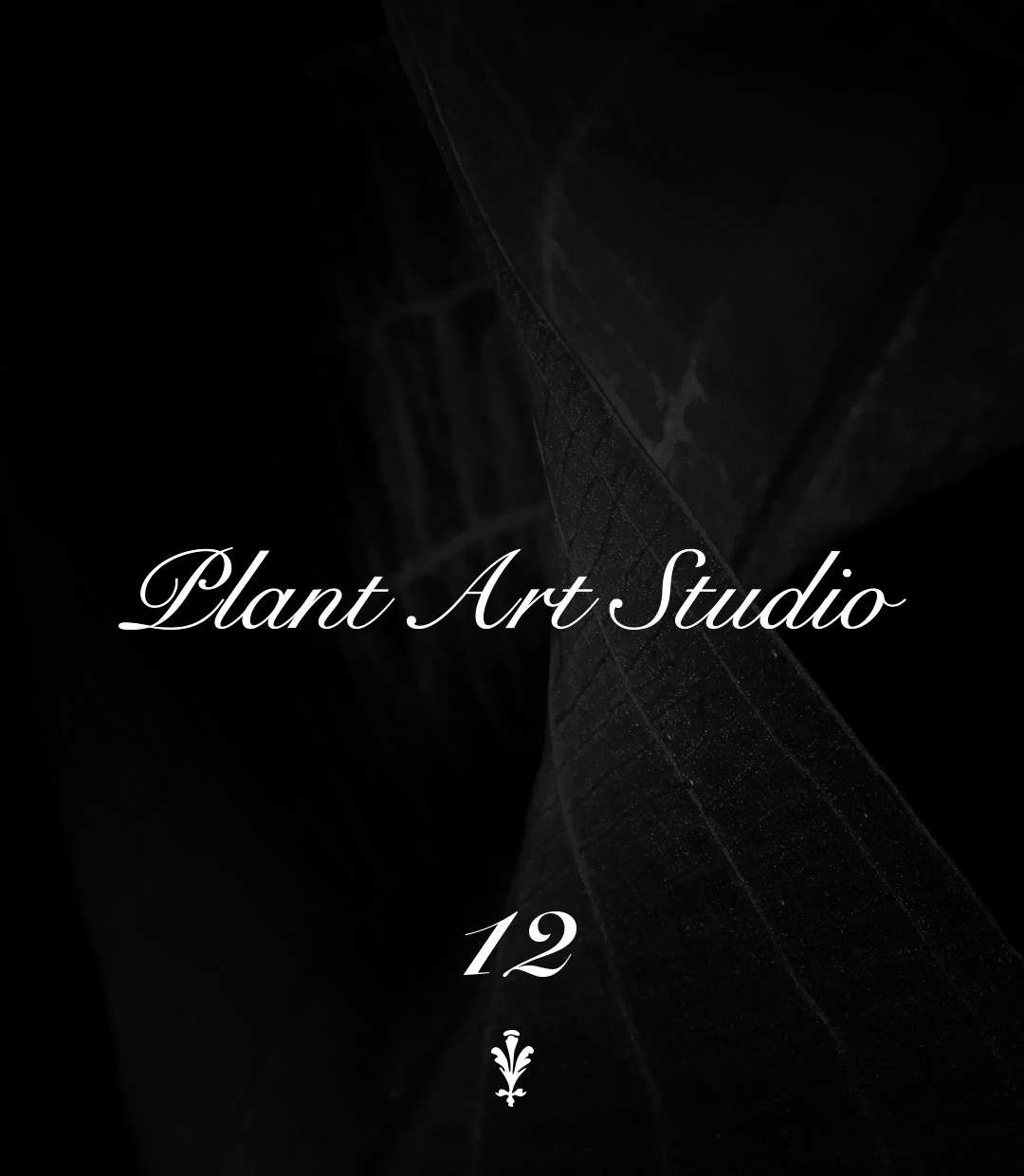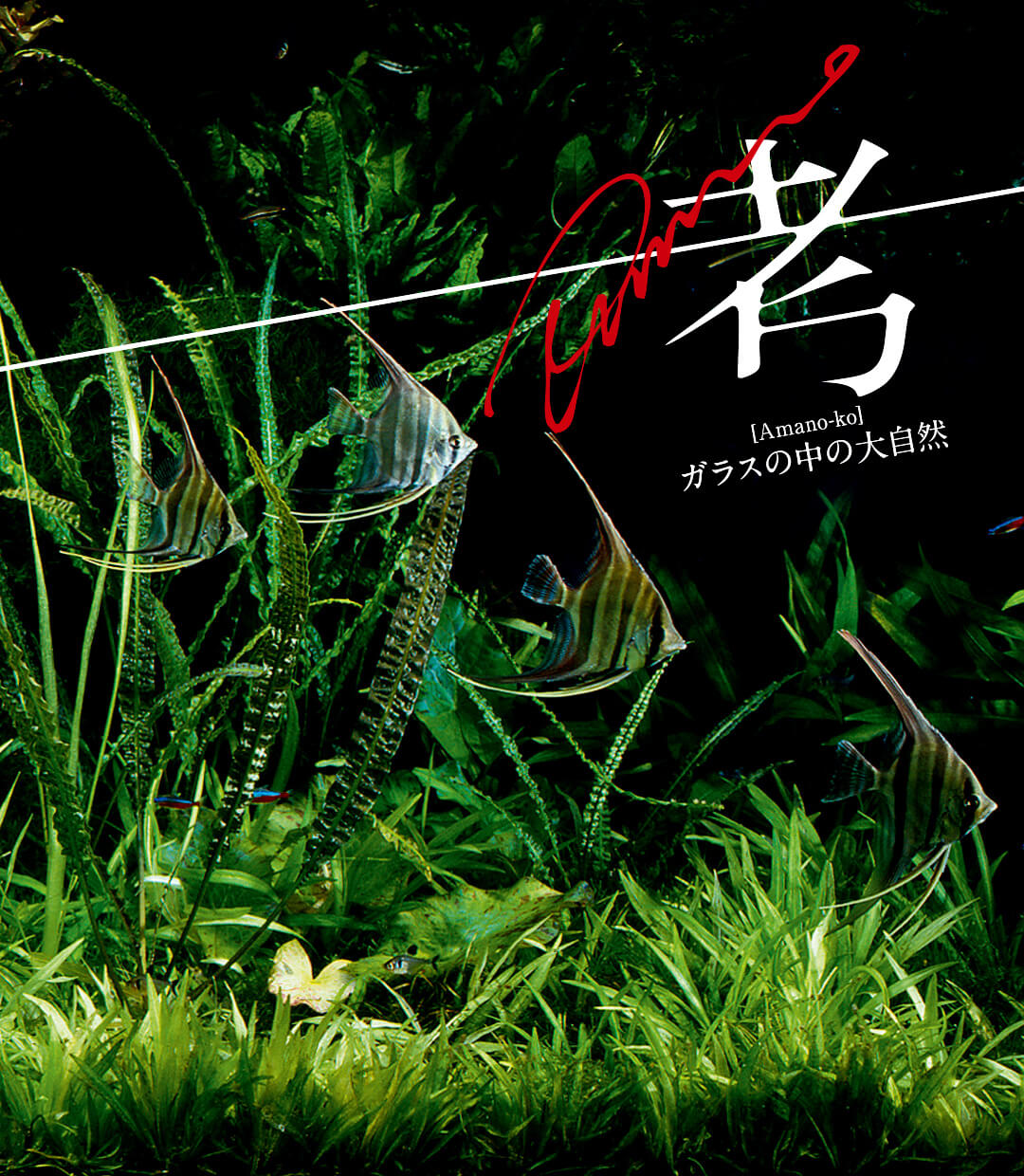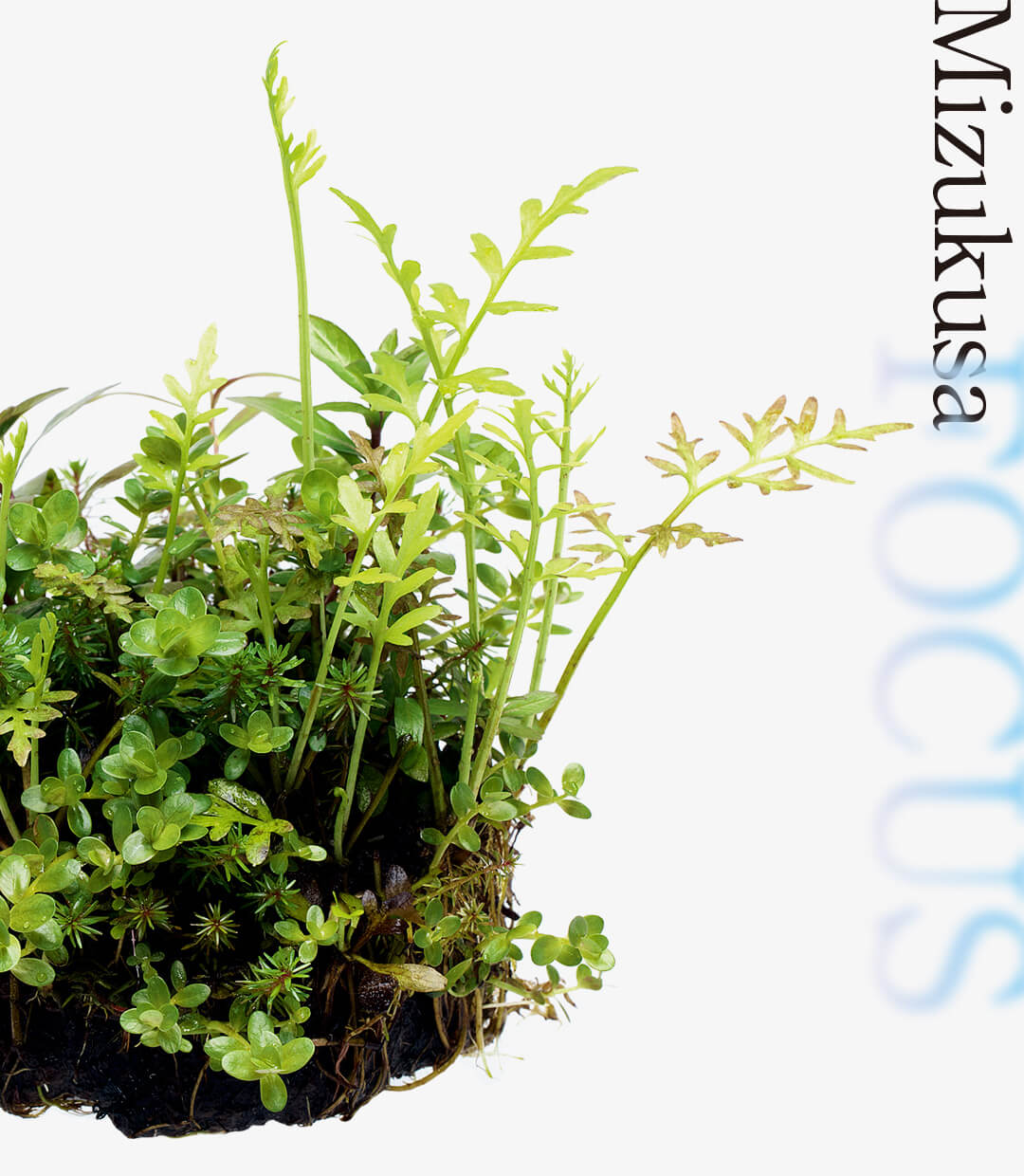FIELD REPORT -Searching for clues from nature-
Yusuke Homma who goes to the fields in the suburbs more often than any other ADA SUIKEI creators, visited the mountain stream of Miomote River located in Murakami City, Niigata. Homma has regularly visited this place for several years, and it is one of the spots where he takes pictures following the expression of nature as it changes by the passage of time. The members of this visit are three including Homma, Shibata and Takizawa from Nature Creation Department (NAC). The NAC is a department Homma named, aiming to express what the staff learn from nature and discover new creativity. And the NAC members work on the front line of the aquascape creation and maintenance. This nature observation took place during NAC’s busy schedule with event preparation, but it was a refreshing experience for all the members. It is also the power of nature, and I think that what we can learn from nature is not just clues for layouts.
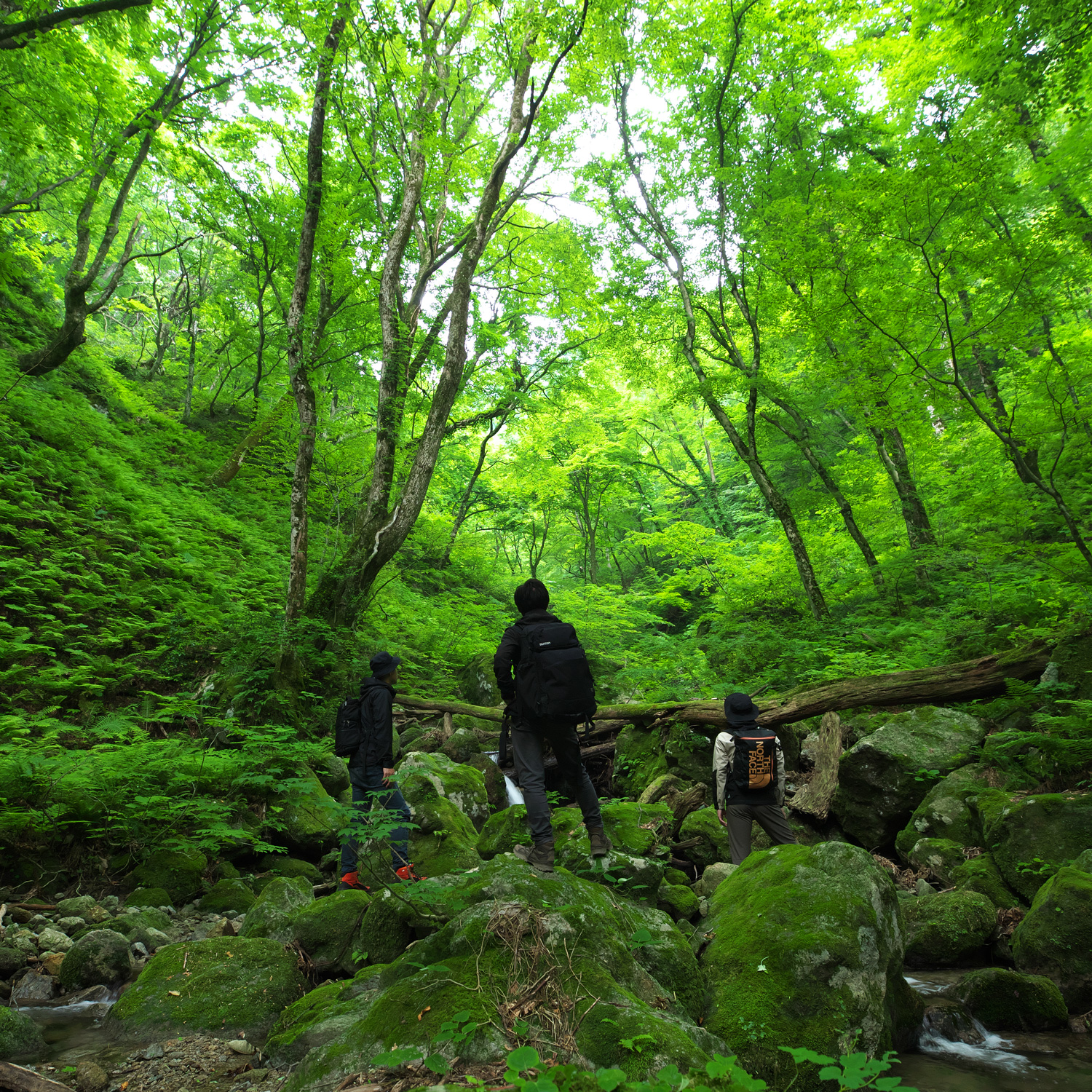
(Location / Murakami City, Niigata)
[ Shibata’s point of view ]
Learning the strength of nature
For the members of the NAC where unrivaled living creature lovers get together, forests and rivers are perfect spots to see and be in touch with various living creatures, and to learn the diversity of nature. But the harshness around this observation site was beyond my imagination, and it was different from my imagination of a calm and delightful forest. In order to get to the destination, we had to tie a rope we brought to trees and go down the steep slope along the rope. Stepping into nature to get inspirations is basically to convert nature into an image and bring it home. I strongly felt that it takes a lot of efforts in exchange. There were soils and screes on the slope. It was almost like I would roll down to the destination mountain stream in an instant if I slipped by accident. I couldn’t even enjoy the surrounding scenery because I was too frightened. I slowly and carefully went down the slope as tightly holding the rope. The scenery of the Miomote River we saw when we finally finished coming down, appeared dignifiedly and welcomed us like making us forget the hardship we just experienced.
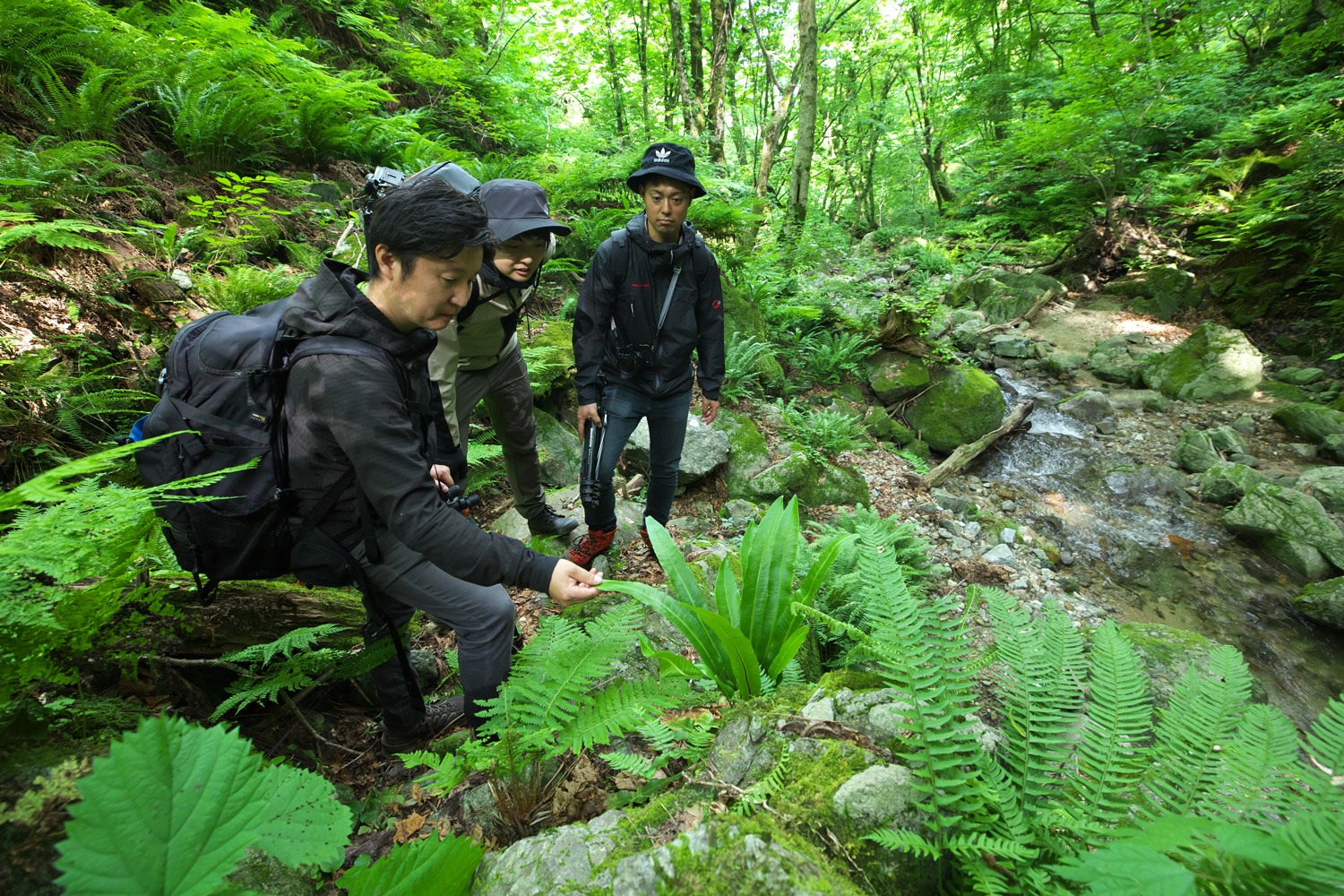
The beauty of the untouched nature seemed pure, and it made me feel the atmosphere peculiar to forests. Nature changes daily, and life and death are repeated like broken trees are drifted, and new life start growing there. All the plants we saw on site were surviving by taking root in their own comfortable environments even in narrow areas. It seemed to me that they were co-existing by appropriately sharing their living area without dying out just because the number was small. Although I often visit the mountain streams to get inspirations for planted aquarium, this experience was great because I had the peers with me that I could exchange opinions. And it was great to share the moment with them.
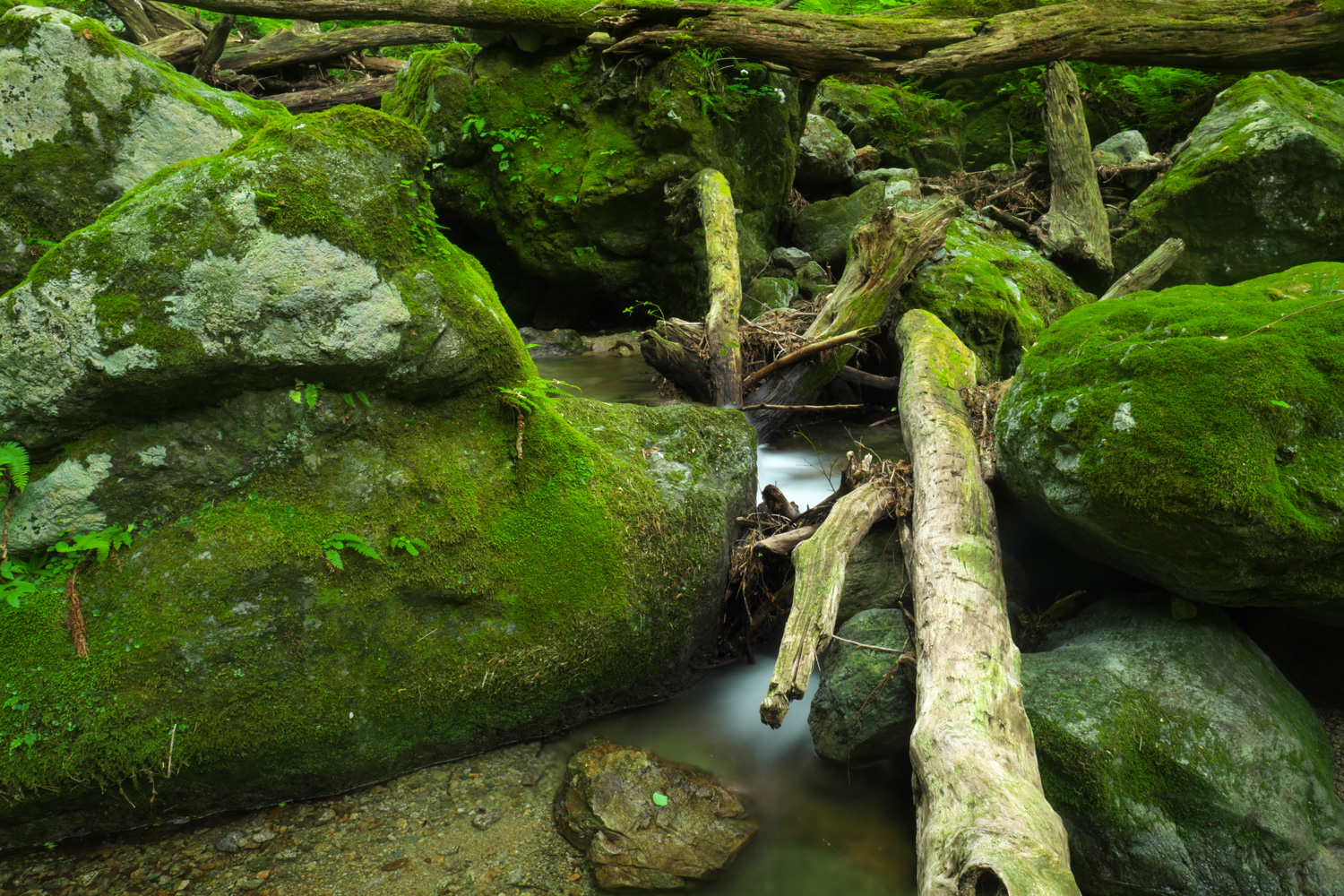
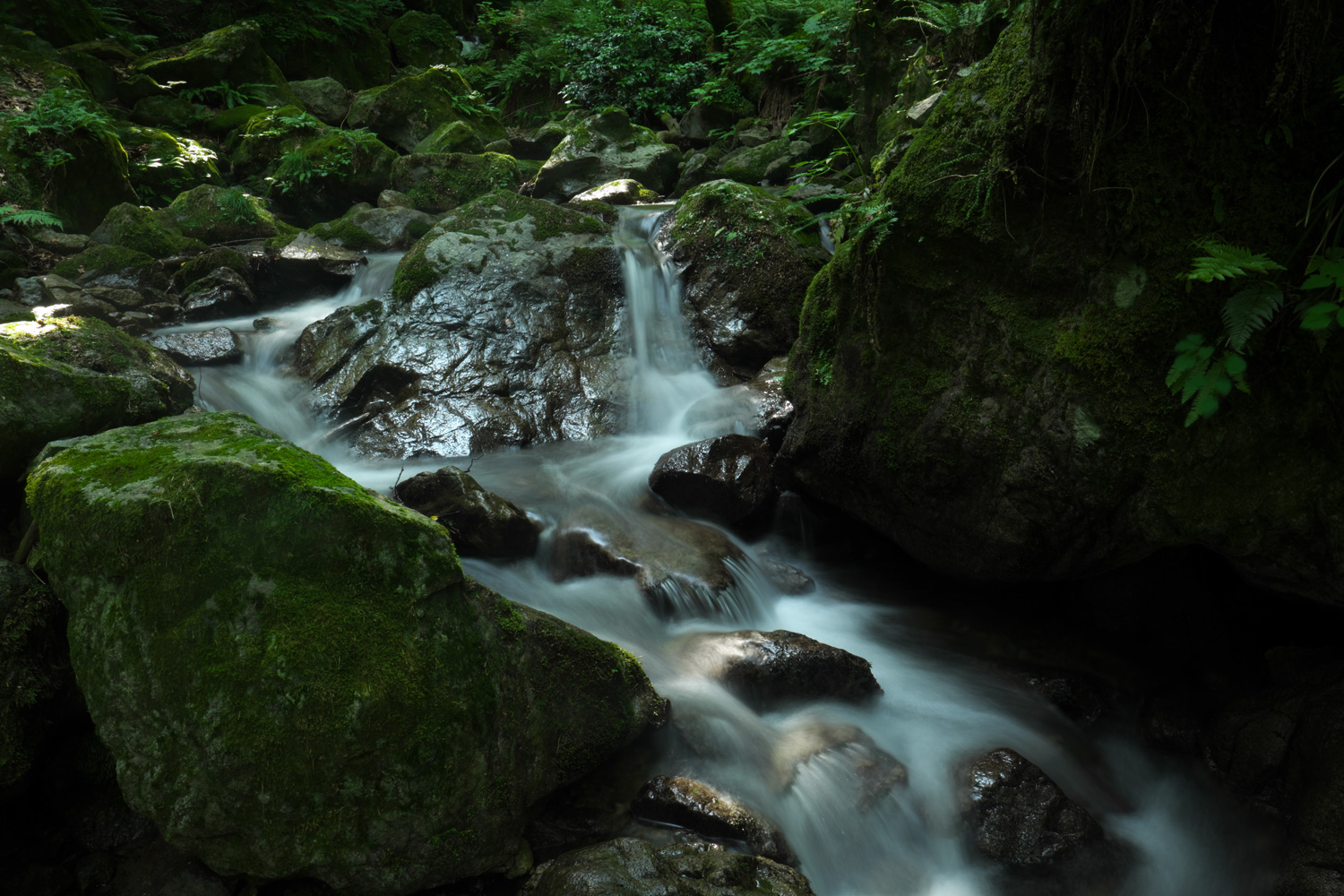
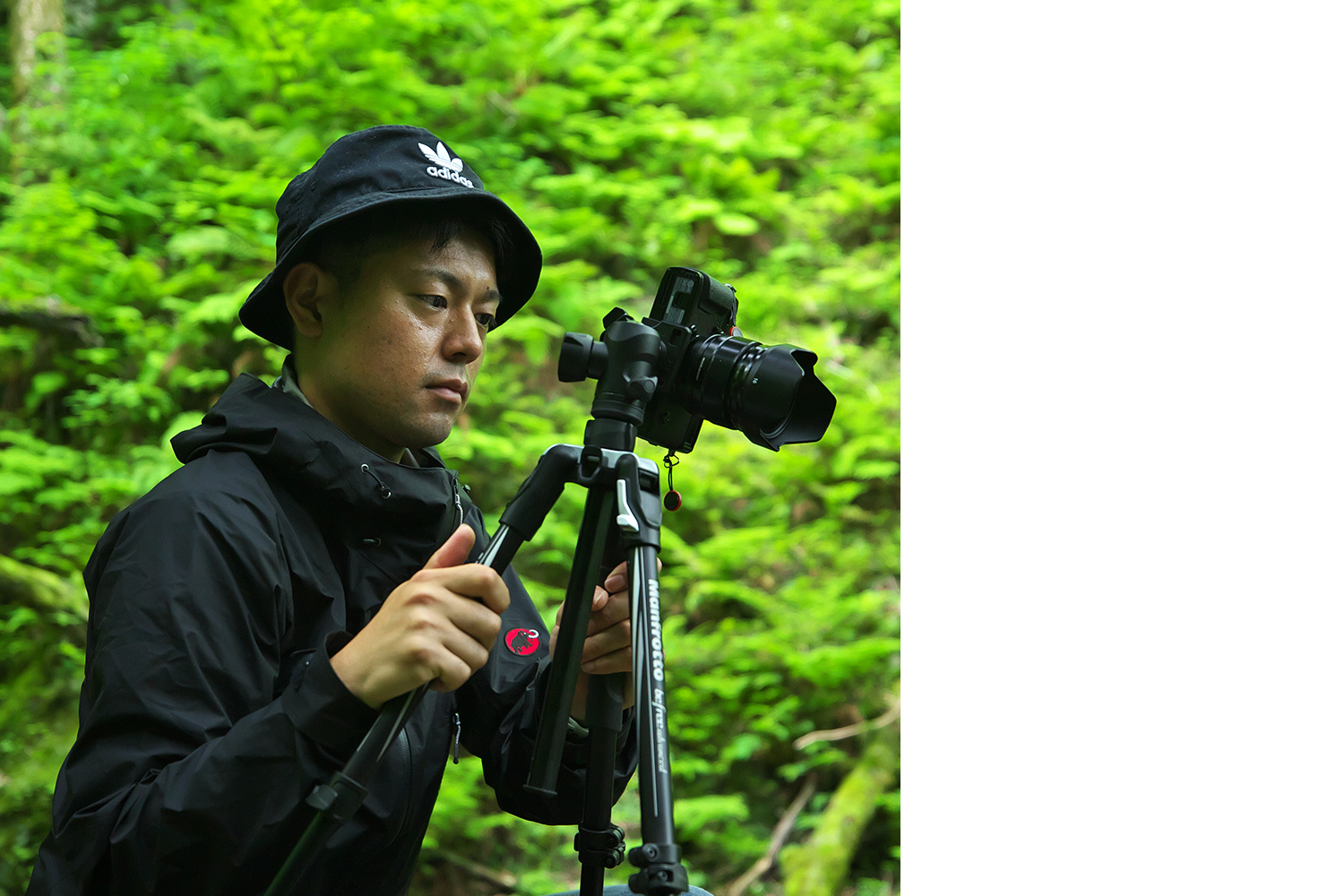
Yasufumi Shibata
He is like a big brother for everyone in the NAC, leading the team and using the abundant experience at the Oceanário de Lisboa. He spends a lot of time in nature camping and doing BBQ on his day off. But he is not a big fan of bugs.
He is like a big brother for everyone in the NAC, leading the team and using the abundant experience at the Oceanário de Lisboa. He spends a lot of time in nature camping and doing BBQ on his day off. But he is not a big fan of bugs.
[ Takizawa’s point of view ]
First nature experience
Although I love fishing, I have almost no experience going to the mountain stream. So, this project was half exciting and half anxious for me. I prepared myself as much as possible, and when we finally got to the river, it gave me a strange feeling that I had never experienced before. The bottom was covered with shade-loving plants, and when looking above, leaves of trees there were blocking the sunlight in the high place. And I was standing in the space between the two. Although the air was very clear, it was humid, and the air felt heavy when I inhaled it. I was able to feel that distinctive moist and profound feeling with my eyes, nose and skin. Trees and mountain stream stones are full of delicate information. But I noticed that the species and shapes were surprisingly simple when I looked at them closely. All the trees covering the sky were big, but there were only a few species. When I looked them up, I found out that trees such as Aesculus turbinate, Cercidiphyllum japonicum and Pterocarya rhoifolia prefer water-rich lands.
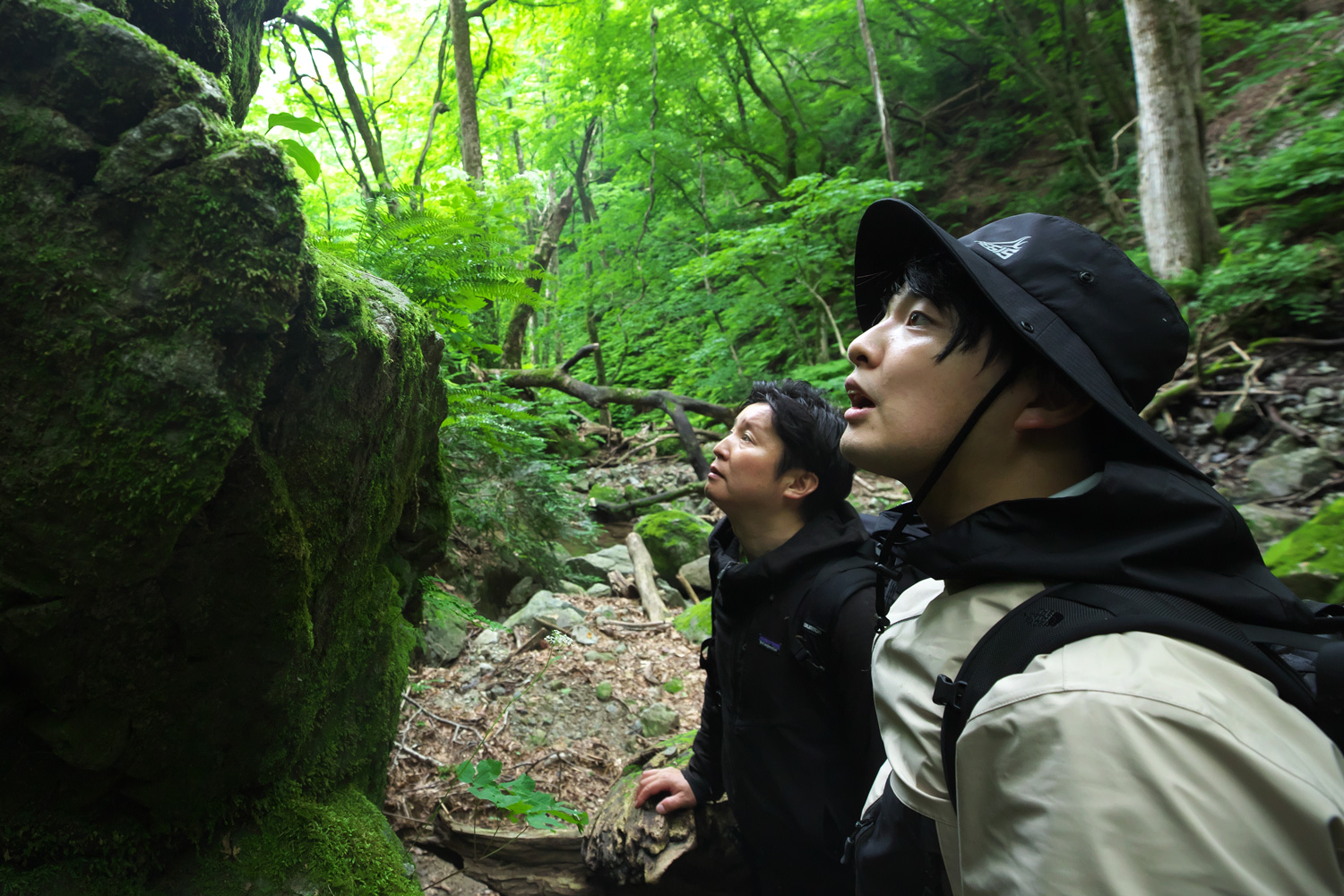
Most of ferns and mosses at the foot are the species that don’t require much sunlight. And I realized that the scenery was made for a reason. Among those trees, I was particularly interested in Cercidiphyllum japonicum. Because its leaves are round and small, it has a delicate impression compared with other trees. And the sunlight that sometimes shined in and the leaves swaying in the gentle wind blowing through the gorge, looked like a green stained glass. Many of the Cercidiphyllum japonicum trees grow massive and have moss on their trunks, and it is easy to understand that they have survived for a long time just by looking at them. Although a lot of them had marks of decaying and breaking from the middle, new buds are usually growing from the broken parts. I was fascinated by the power of the trees trying to survive from there with plenty of water and abundant nutrients brought by the river, even though they were broken. I was able to feel again that there were so many things I could realize by actually visiting such a place. It was a great experience for me to actually feel those important things that could not be conveyed by pictures and words.
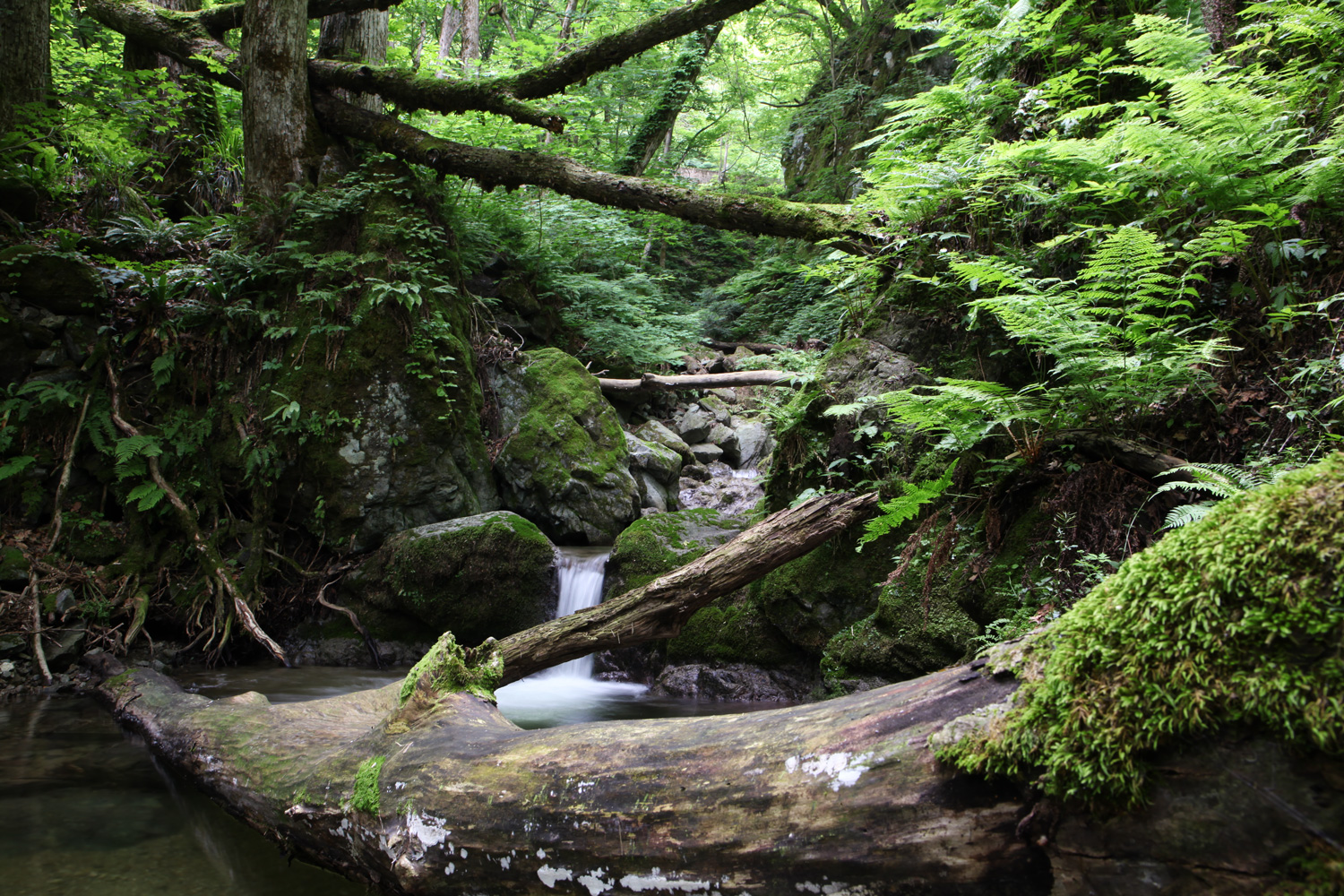
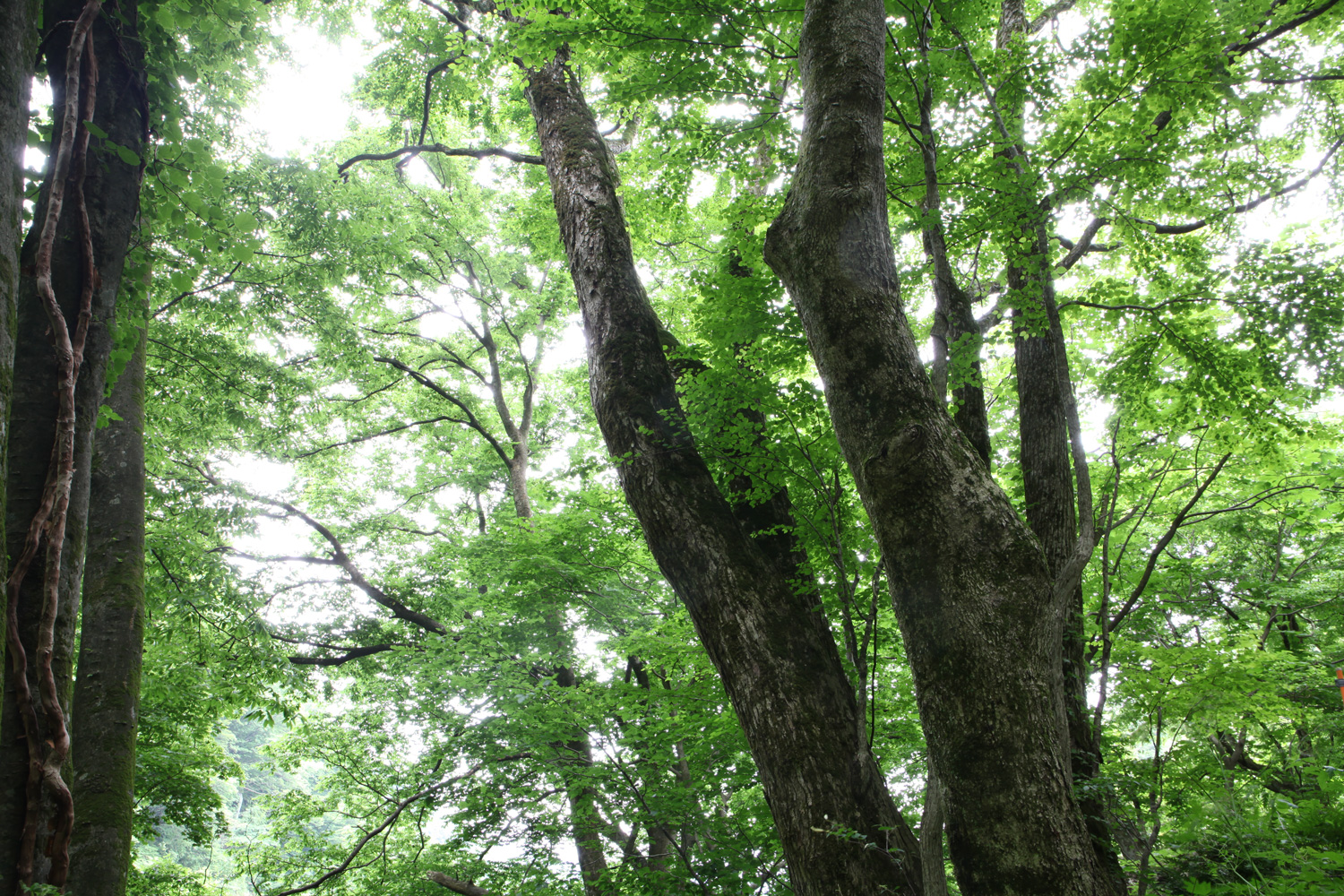
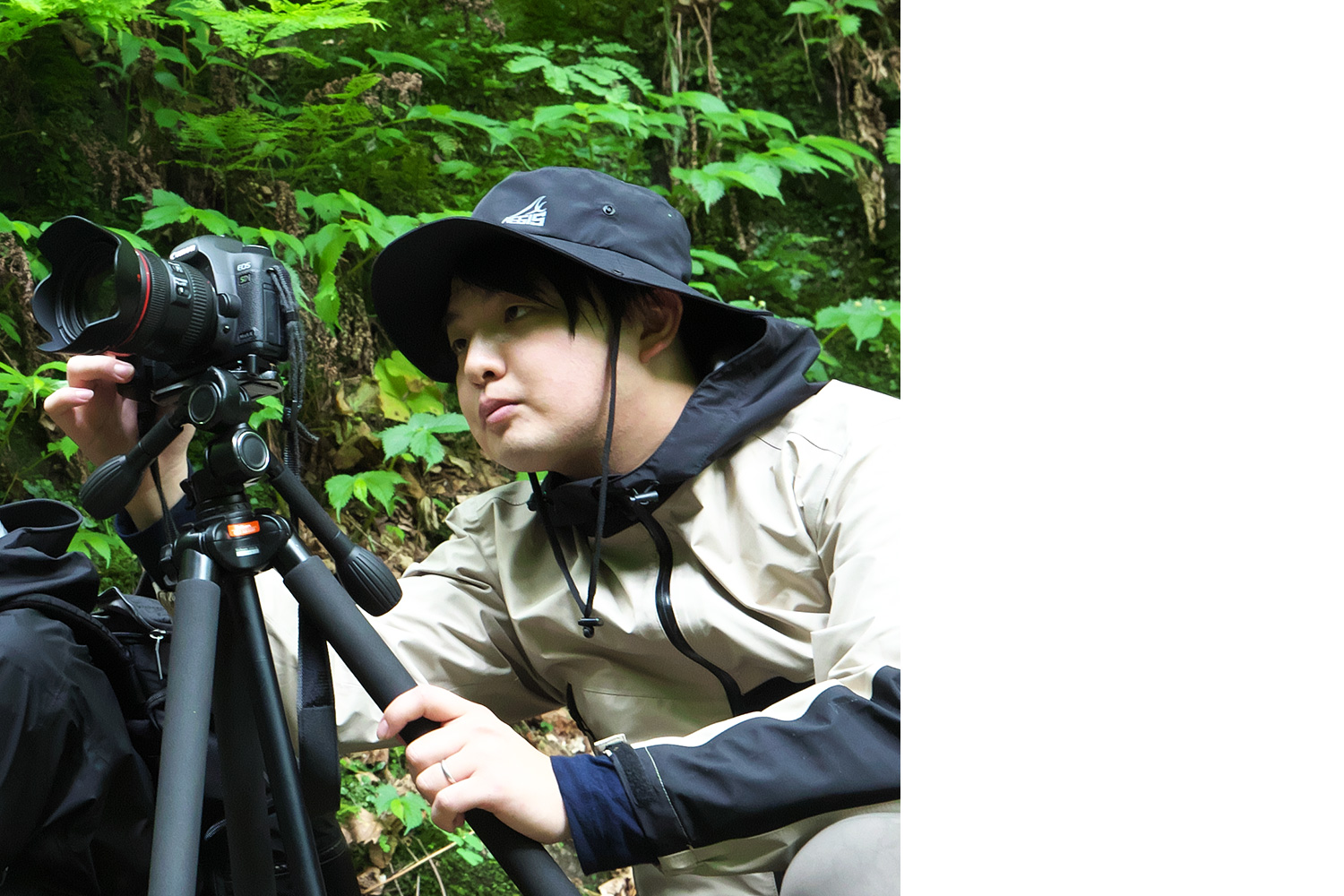
Mizuki Takizawa
He is the most powerful one in the NAC who loves insects and aquatic life. He works hard on the maintenance tasks with his muscular body and smile. His beloved car is Delica.
He is the most powerful one in the NAC who loves insects and aquatic life. He works hard on the maintenance tasks with his muscular body and smile. His beloved car is Delica.
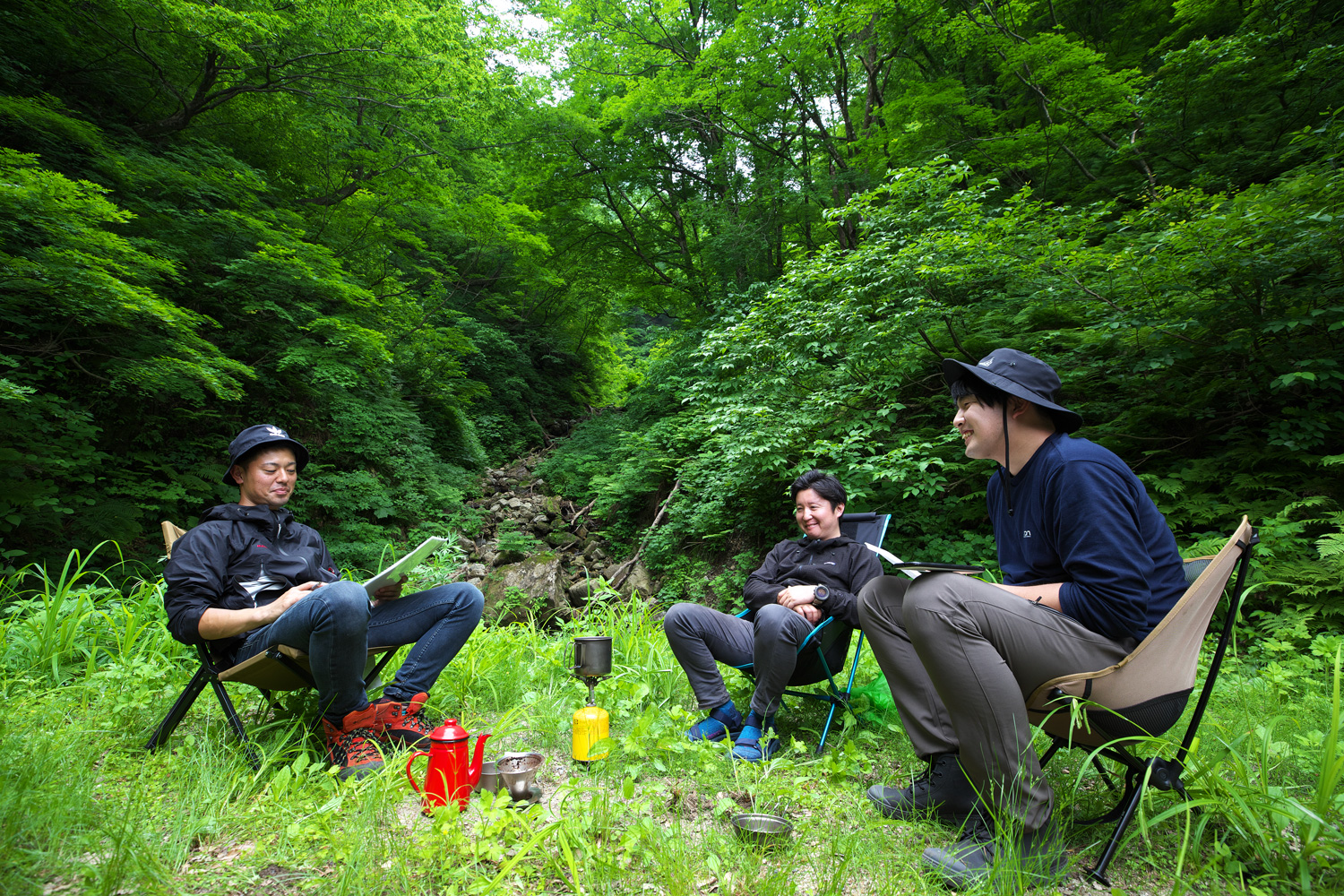
INTERVIEW
Yusuke Homma Yasufumi Shibata Mizuki Takizawa
Homma The upper Miomote River is a field I’ve visited many times, but I think this is the first time with you two, right? I’m sure you have a lot of feelings. How was it?
Shibata Well, I was so nervous when we were going down the steep slope along the rope in the beginning (laugh). There were so many trees decayed over time when actually observing at the swamp. Layout imaginations get expanded, don’t they? Besides that, places where ferns were growing, different moss species and the way mosses were growing on rocks, were quite impressive. I think that getting closer to those plants and actually touching them helped me realize the world of small plants that I didn’t know before. Ferns and moss are often used to express the passage of time in aquarium. By seeing them with my own eyes and actually observing them, it really made sense to use ferns and moss.
Takizawa Actually, there were so many things that we wouldn’t be able to feel unless we come out to the field. I think Mr. Homma creates aquascapes as feeling so many things by being in nature frequently. And I also think that that sensations you get, like the weight of the humid air and the scent of the air when coming down to the swamp, affect the atmospheres of your aquascapes.
Homma That’s right. It’s important to see things with your own eyes and get feelings. Especially this place we came today is a place I’ve been visiting for 5-6 years. But I still find something new and learn new things from this place. I cherish every single encounter with natural scenery that changes constantly and try to record the encounters and keep them by taking pictures. When taking pictures, I even analyze why certain rocks look so attractive, or why I feel the power of some fallen trees etc. in my own way. I input those thoughts and ideas into myself as doing so, and I express them into aquascapes when feeling creative.
Takizawa I see. I think that the way I look at scenery is different now because of the experience I directly learned from you about photo shooting, like if taking pictures from a certain angle, it would look more powerful, or if having moss in the front when taking pictures, it gives perspective etc.
Shibata It really made me cherish how I felt in nature during this visit. It would be even better if I could use this experience for work. I think that sharing the perspective on nature with other members of ADA, like aquascape creation and maintenance, is important. I really think that when we reach that point, we will be able to do higher level work.
Homma To be able to achieve that, it is necessary to have a lot of experiences in nature, and it is important to see things with your own eyes and actually sense them. I hope you can learn a lot more things about nature because you work with aquatic plants and living things all the time. It would be fantastic if we could utilize what we learn for our future activities!
Shibata Well, I was so nervous when we were going down the steep slope along the rope in the beginning (laugh). There were so many trees decayed over time when actually observing at the swamp. Layout imaginations get expanded, don’t they? Besides that, places where ferns were growing, different moss species and the way mosses were growing on rocks, were quite impressive. I think that getting closer to those plants and actually touching them helped me realize the world of small plants that I didn’t know before. Ferns and moss are often used to express the passage of time in aquarium. By seeing them with my own eyes and actually observing them, it really made sense to use ferns and moss.
Takizawa Actually, there were so many things that we wouldn’t be able to feel unless we come out to the field. I think Mr. Homma creates aquascapes as feeling so many things by being in nature frequently. And I also think that that sensations you get, like the weight of the humid air and the scent of the air when coming down to the swamp, affect the atmospheres of your aquascapes.
Homma That’s right. It’s important to see things with your own eyes and get feelings. Especially this place we came today is a place I’ve been visiting for 5-6 years. But I still find something new and learn new things from this place. I cherish every single encounter with natural scenery that changes constantly and try to record the encounters and keep them by taking pictures. When taking pictures, I even analyze why certain rocks look so attractive, or why I feel the power of some fallen trees etc. in my own way. I input those thoughts and ideas into myself as doing so, and I express them into aquascapes when feeling creative.
Takizawa I see. I think that the way I look at scenery is different now because of the experience I directly learned from you about photo shooting, like if taking pictures from a certain angle, it would look more powerful, or if having moss in the front when taking pictures, it gives perspective etc.
Shibata It really made me cherish how I felt in nature during this visit. It would be even better if I could use this experience for work. I think that sharing the perspective on nature with other members of ADA, like aquascape creation and maintenance, is important. I really think that when we reach that point, we will be able to do higher level work.
Homma To be able to achieve that, it is necessary to have a lot of experiences in nature, and it is important to see things with your own eyes and actually sense them. I hope you can learn a lot more things about nature because you work with aquatic plants and living things all the time. It would be fantastic if we could utilize what we learn for our future activities!
